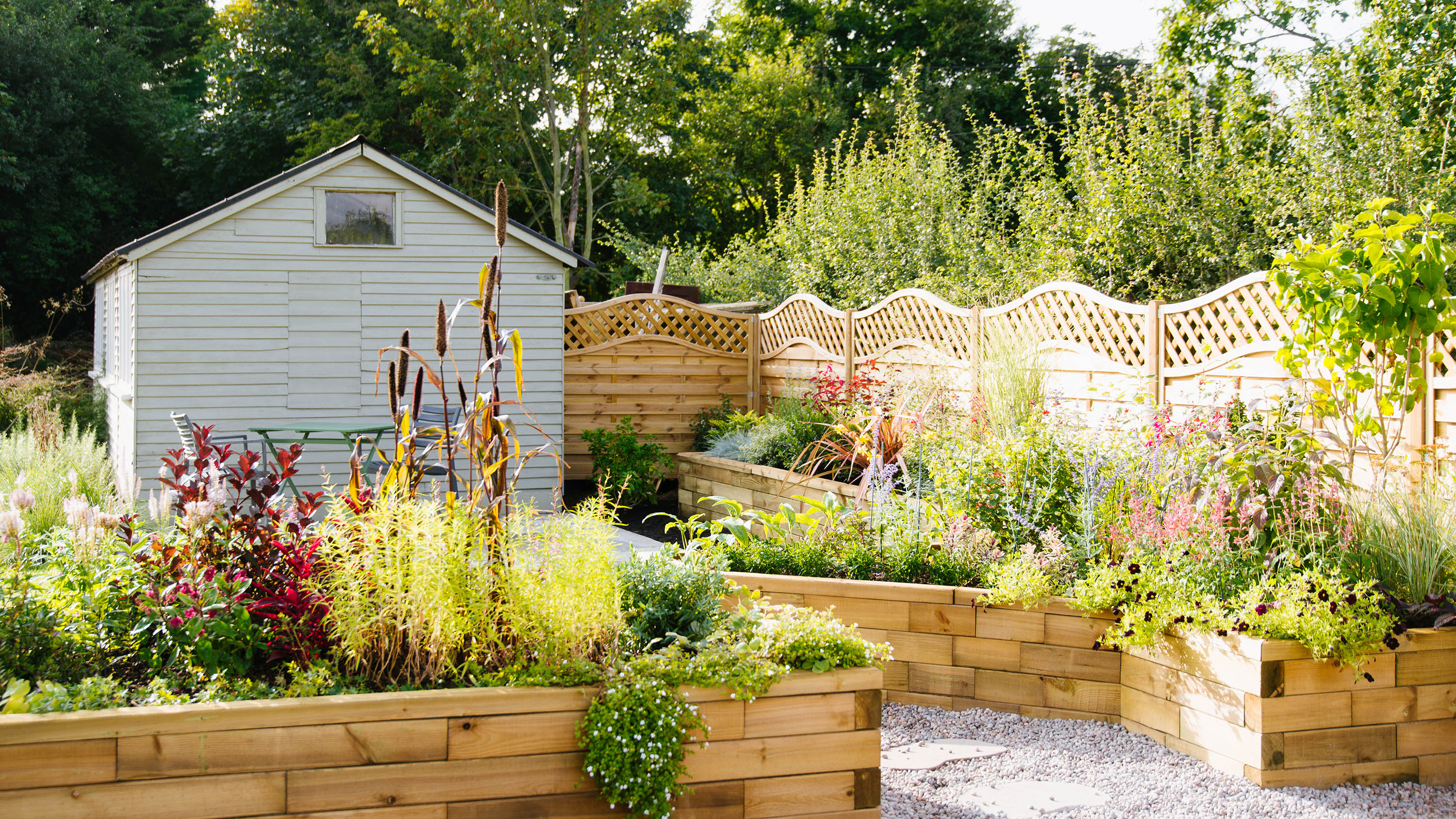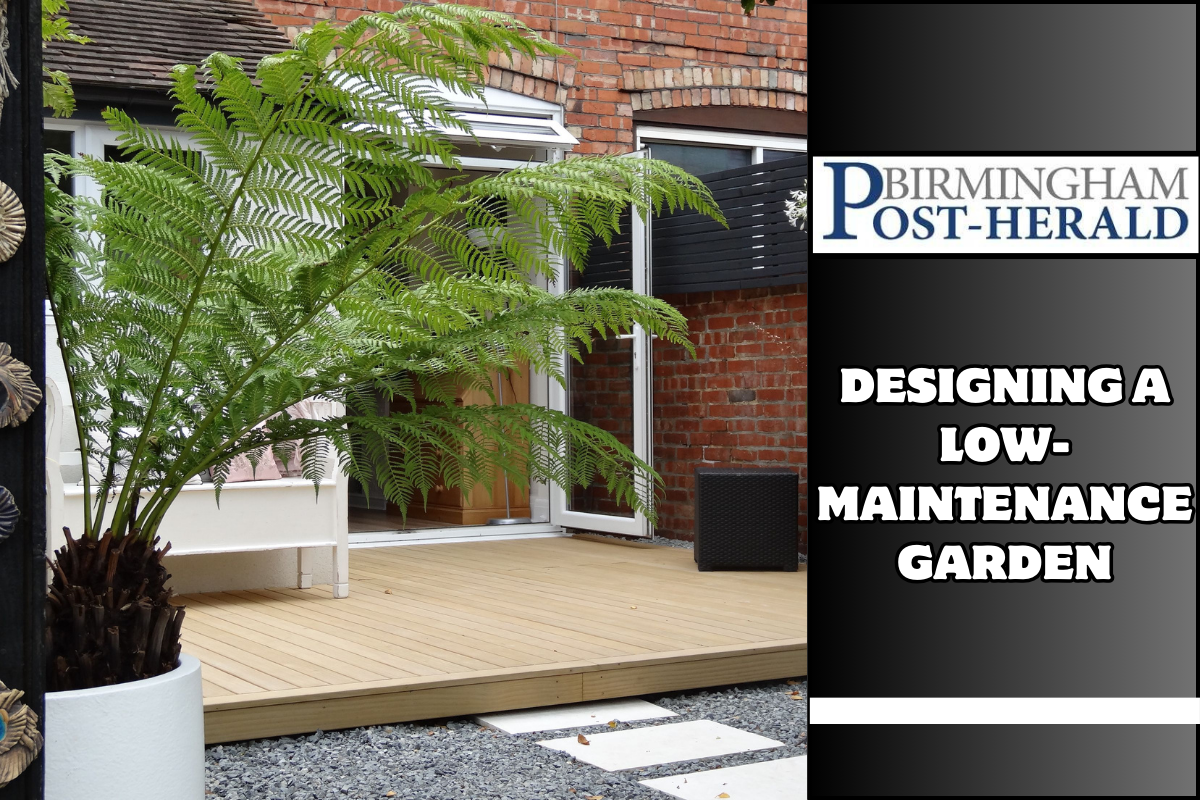Designing a Low-Maintenance Garden:-A low-maintenance garden needs careful planning, smart plant choices, and efficient gardening techniques to make a beautiful and useful outdoor place that doesn’t need much care. Here’s how to make a garden that doesn’t need much care:
Designing a Low-Maintenance Garden
1. Assess Your Garden Space
- First, take a look at your yard and write down its size, shape, type of soil, amount of sunlight, and any features that are already there.
- Knowing about these things will help you pick plants and design elements that will work well in a low-maintenance garden.
2. Opt for Native and Drought-Tolerant Plants
- Pick native plants and species that can survive in dry conditions that are good for your area’s temperature and soil.
- These plants usually do well in harsh conditions, need less water, and are less likely to get pests or diseases, so they don’t need to be watered or cared for as often.
3. Use Perennials and Evergreens
- In your garden planning, use a mix of perennial plants and evergreen shrubs.
- Since perennials grow back every year, you don’t have to replant them as often.
- On the other hand, evergreens have leaves and structure all year, so they don’t need as much trimming or care.
4. Group Plants by Watering Needs
- In your yard beds, put plants that need about the same amount of water together.
- This lets you water plants more efficiently, so you don’t hurt some by giving them too much or too little water.
- To get water straight to the roots of plants, you might want to use drip irrigation or soaking hoses.
5. Mulch and Weed Control
- Put down a layer of mulch around your plants and flower beds, like wood chips, shredded bark, or gravel.
- It keeps the earth moist, stops weeds from growing, and lowers the amount of watering and weeding that needs to be done.
- Weeds will hurt your yard plants if you don’t get rid of them regularly.
6. Minimize Lawn Areas
- Cut down on the size of your lawns or look into other ground plants that don’t need as much care as grass.
- Ground covers like clover, creeping thyme, and decorative grasses can make your yard look better while also making it easier to mow and water.

Also Read:-Importance of Pollinator-Friendly Gardens
7. Choose Low-Maintenance Hardscape Features
- Add hardscape features that don’t need much upkeep, like patios, paths, raised beds, and plant borders.
- Stone, pavers, or composite decking are all long-lasting materials that don’t need much care and can handle the weather outside.
8. Select Easy-Care Garden Structures
- Pick yard structures that are easy to take care of, like trellises, arbors, and containers.
- Choose materials that won’t get damaged by the weather and won’t need much painting or coloring over time.
9. Reduce Pruning Requirements
- Choose plants that naturally grow in a tight shape or that don’t need much trimming.
- Stay away from plants that grow quickly and need to be trimmed and cared for often.
- To keep trees and plants in shape, prune them as needed to get rid of dead or damaged branches and encourage healthy growth.
10. Incorporate Low-Maintenance Design Elements
- Decorative rocks, sculptures, ornamental grasses, and natural wildflowers are all low-maintenance design elements that can be used.
- These things make your yard look nicer while not needing much care over time.
11. Implement Smart Garden Practices
- As a smart gardener, you should prepare the soil properly, use slow-release fertilizers regularly, and keep an eye out for pests and diseases right away.
- Plants that are healthy are more resistant to damage and need less care.
12. Consider Seasonal Interest
- Pick plants that have blooms, leaves that change color and texture, and other seasonal features that make your garden interesting all year long.
- Include a variety of plants that bloom at different times to keep your garden colorful and interesting to look at.
If you follow these tips and plan your garden with low-maintenance features in mind, you can make a beautiful and long-lasting outdoor place that needs less time, effort, and resources to keep up. This means you can enjoy your garden with less stress and trouble.
